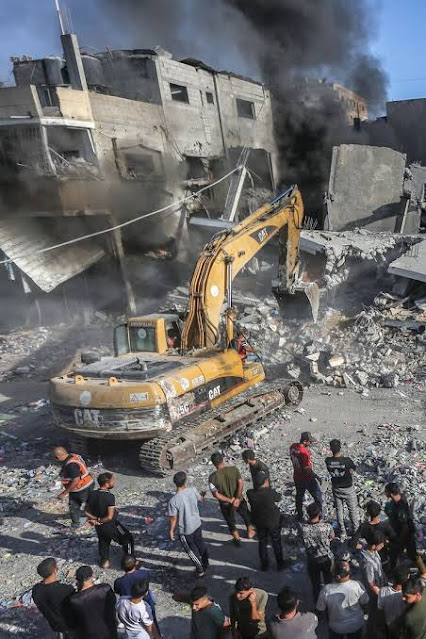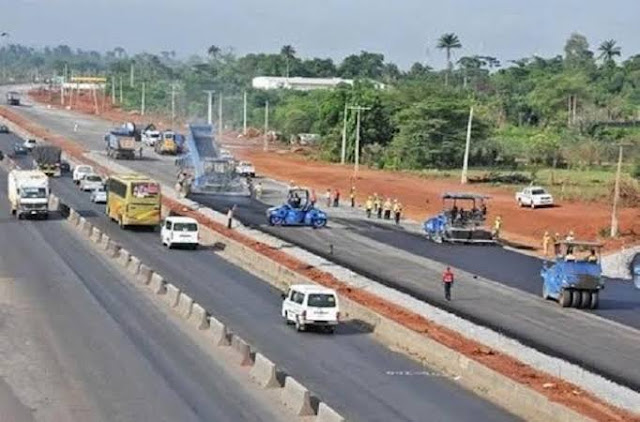In a significant escalation of the ongoing conflict in the Gaza Strip, the Israeli military has intensified its ground offensive in Gaza City, employing advanced robotic technology to demolish Palestinian homes. According to a report by Press TV, the operation, which began earlier this month, has resulted in the destruction of over 1,500 homes in the al-Zeitoun neighborhood alone, reducing entire communities to rubble. This development marks a new phase in Israel’s military campaign against Hamas, characterized by the use of cutting-edge technology and raising serious concerns about the humanitarian impact on Gaza’s civilian population. The deployment of robots, alongside traditional military tactics, underscores the evolving nature of warfare in the region and the complex dynamics of the Israeli-Palestinian conflict.
Background of the Conflict
The Gaza war, which began on October 7, 2023, following a surprise attack by Hamas and other Palestinian militant groups on southern Israel, has entered its 697th day as of September 2, 2025. The initial Hamas-led assault resulted in the deaths of 1,195 Israelis and foreign nationals, including 815 civilians, and the abduction of 251 hostages. The stated goal of the attack was to pressure Israel into releasing Palestinian prisoners held in its jails. In response, Israel launched a massive military offensive in Gaza, aimed at dismantling Hamas’s military infrastructure and securing the release of the hostages.
Since the onset of the conflict, the Israeli offensive has caused unprecedented devastation in Gaza. According to the Hamas-run health ministry, over 63,600 Palestinians have been killed, with nearly half being women and children, and more than 160,900 others injured. A study published in The Lancet estimated that by June 2024, 64,260 Palestinians had died from traumatic injuries alone, with the potential for a significantly higher death toll when indirect deaths from starvation, disease, and lack of medical care are considered. The war has displaced nearly all of Gaza’s population, with 80% of residents forced to flee their homes, and has triggered a severe humanitarian crisis marked by famine, malnutrition, and the collapse of essential services.
The current offensive in Gaza City, which began in August 2025, represents a strategic shift in Israel’s approach, with the stated goal of achieving full control of the Gaza Strip, starting with its most populous city. The deployment of robots in this campaign has drawn particular attention, highlighting Israel’s reliance on advanced technology to achieve its military objectives while raising questions about the ethical and legal implications of such tactics.
The Use of Robots in the Gaza Offensive
According to the Palestinian Civil Defense, the Israeli military has employed bomb-laden robots and quadcopters to carry out systematic demolitions in Gaza City’s al-Zeitoun neighborhood. Mahmoud Bassal, the agency’s spokesperson, reported that these robots, combined with construction machinery, have been used to detonate seven sites daily, leaving no buildings standing in the southern part of the district. The use of explosives-laden vehicles, remotely detonated by Israeli forces, has further exacerbated the destruction, leveling homes and displacing thousands of residents.
The deployment of robotic technology in this manner represents a significant evolution in Israel’s military strategy. Unlike traditional ground operations, which rely heavily on human soldiers, the use of robots allows for precise and remote-controlled demolitions, reducing the risk to Israeli troops while maximizing the impact on targeted areas. Quadcopters, equipped with explosives, have been used to drop payloads on rooftops, further accelerating the destruction of residential structures. This approach has enabled Israeli forces to carry out large-scale demolitions with unprecedented efficiency, but it has also raised concerns about the indiscriminate nature of the attacks and their impact on civilians.
The use of robots in warfare is not entirely new for Israel, which has long been a leader in military technology. The Israeli Defense Forces (IDF) have previously employed drones, unmanned vehicles, and artificial intelligence-based systems in their operations. For example, a 2024 report by The Guardian revealed that Israel used an AI-based tool called “Lavender” to identify and target suspected Hamas operatives in Gaza, often with the knowledge that civilians would be killed in the process. The deployment of bomb-laden robots in Gaza City appears to be an extension of this trend, reflecting Israel’s increasing reliance on technology to achieve its military objectives.
Humanitarian Impact and Civilian Toll
The destruction of over 1,500 homes in al-Zeitoun has had a devastating impact on Gaza’s civilian population. According to the Palestinian Civil Defense, 80% of the neighborhood’s residents have been forced to flee to western or northern areas of Gaza City, adding to the already staggering number of displaced persons in the territory. The systematic demolition of homes has left families without shelter, exacerbating the humanitarian crisis that has gripped Gaza since the onset of the war.
The broader offensive in Gaza City has also resulted in significant civilian casualties. On September 1, 2025, Israeli airstrikes and ground operations killed at least 19 Palestinians, including 16 in the Tal al-Hawa neighborhood and four in Jabalia Al-Nazla, according to Reuters and Press TV. Nine others were killed while waiting in line for aid near the Netzarim corridor, highlighting the dangers faced by civilians even when seeking basic necessities. The Hamas-run health ministry reported that 13 people, including children, died from famine and malnutrition on the same day, bringing the total number of malnutrition-related deaths to over 300, including 117 children.
The targeting of civilian infrastructure, including homes, hospitals, and aid distribution sites, has drawn widespread condemnation. The United Nations and international humanitarian organizations have repeatedly called for an immediate ceasefire and unimpeded access to aid, but Israel has continued to restrict the flow of food, water, and medical supplies into Gaza. The UN’s humanitarian agency reported in August 2025 that the amount of aid entering the territory remains “far below the minimum required to meet people’s immense needs,” contributing to the ongoing famine and malnutrition crisis.
International Reactions and Allegations of Genocide
The use of robots and other advanced technologies in Israel’s Gaza offensive has intensified international scrutiny of the conflict. The world’s leading association of genocide scholars, the International Association of Genocide Scholars, passed a resolution in August 2025 declaring that Israel’s actions in Gaza meet the legal criteria for genocide. The resolution cited several factors, including attacks on the healthcare sector, the killing of children, and the systematic destruction of civilian infrastructure. Hamas has hailed the resolution as “new legal documentation” of Israel’s war crimes and crimes against humanity, urging the United Nations Security Council to take immediate action to halt the offensive.
The International Court of Justice (ICJ) is currently investigating Israel for genocide, while the International Criminal Court (ICC) has issued arrest warrants for Israeli Prime Minister Benjamin Netanyahu and former Defense Minister Yoav Gallant for war crimes committed in Gaza. These legal developments have placed additional pressure on Israel to justify its military actions, particularly in light of the high civilian death toll and the destruction of entire neighborhoods.
International media outlets and human rights organizations have also condemned Israel’s tactics, particularly the targeting of journalists and medical personnel. On August 25, 2025, an Israeli double strike on Nasser Hospital in Khan Younis killed 22 people, including five journalists working for Reuters, AP, Al Jazeera, and Middle East Eye. The attack, which involved a second strike targeting rescuers responding to the initial blast, was described by UN Secretary-General António Guterres as a “grave breach of international law.” The Committee to Protect Journalists (CPJ) noted that the war in Gaza has been the deadliest conflict for journalists since it began recording data in 1992, with nearly 200 journalists killed since October 2023.
Israeli Military Objectives and Domestic Challenges
The Israeli military has stated that its operations in Gaza City are aimed at destroying Hamas’s military infrastructure and securing the release of the remaining hostages. On August 20, 2025, Israel called up 60,000 reservists to support the offensive, which is expected to cost over $7 billion. However, the campaign has faced significant domestic opposition, with hundreds of Israeli reservists refusing to report for duty. According to Haaretz, 365 soldiers, including Sergeant First Class Max Kresch, have publicly declared their refusal to participate in what they describe as “Netanyahu’s illegal war,” citing moral and ethical concerns about the offensive.
The Israeli government has also faced criticism from within its own ranks. Defense chiefs have reportedly warned Prime Minister Netanyahu that the Gaza City takeover will not achieve the goal of defeating Hamas and have urged him to pursue a limited hostage deal instead. Protests across Israel, dubbed the “day of disruption” by the Hostages and Missing Families Forum, have called for an end to the war and the immediate release of the remaining hostages. As of September 2025, more than 60 living hostages and the bodies of approximately 35 others are still held in Gaza, according to Israeli authorities.
Ceasefire Negotiations and Regional Dynamics
Efforts to broker a ceasefire have been ongoing but have repeatedly faltered. A temporary ceasefire in November 2023 collapsed, and a second truce in January 2025 was violated by Israel’s surprise attack in March. In August 2025, Hamas agreed to a proposed arrangement to release half of the remaining hostages in exchange for 150 Palestinian prisoners during a 60-day ceasefire, but Israel did not respond to the proposal by the August 22 deadline. Qatari mediators have reported that the offer was 98% aligned with a proposal put forward by US Special Envoy Steve Witkoff, but Israel’s insistence on new concessions has stalled negotiations.
The United States, a key ally of Israel, has played a complex role in the conflict. While providing military and diplomatic support to Israel, the US has faced growing pressure to address the humanitarian crisis in Gaza. Reports in The Washington Post suggest that the Trump administration is considering a controversial plan to take control of Gaza and relocate its population, either through “voluntary” departures or to restricted zones within the territory. Hamas has vehemently rejected this proposal, with political bureau member Bassem Naim asserting that “Gaza is not for sale” and is an integral part of the Palestinian homeland.
The Broader Implications of Robotic Warfare
The deployment of robots in Gaza City raises broader questions about the future of warfare and the ethical considerations of using autonomous or semi-autonomous systems in conflict zones. While these technologies allow for greater precision and reduced risk to soldiers, they also increase the potential for indiscriminate harm, particularly in densely populated areas like Gaza. The use of bomb-laden robots to demolish homes has been criticized as a violation of international humanitarian law, which requires proportionality and distinction between military and civilian targets.
The reliance on robotic technology also highlights the growing role of artificial intelligence and automation in modern warfare. Israel’s use of AI-based systems like Lavender has already been documented, and the deployment of robots in Gaza City suggests a further integration of technology into its military strategy. This trend raises concerns about accountability, as decisions made by machines or remote operators may lack the human judgment needed to assess the complex ethical and legal implications of military actions.
The Humanitarian Crisis and Path Forward
The ongoing offensive in Gaza City, coupled with the use of advanced technology, has deepened the humanitarian crisis in the territory. The destruction of homes, hospitals, and schools has left Gaza’s population in a state of extreme vulnerability, with limited access to food, water, shelter, and medical care. The confirmation of famine in Gaza City by UN-backed experts underscores the urgent need for international intervention to address the crisis and prevent further loss of life.
For the international community, the challenge lies in balancing diplomatic efforts to secure a ceasefire with the need to hold all parties accountable for violations of international law. The UN Security Council, which has been urged by Hamas to take immediate action, faces significant obstacles due to divisions among its permanent members. The United States, in particular, has been criticized for its reluctance to exert meaningful pressure on Israel to end the offensive, despite growing evidence of war crimes and genocide.
For Palestinians in Gaza, the destruction of their homes and communities represents a profound loss, not only of physical infrastructure but also of cultural and historical heritage. The systematic demolition of neighborhoods like al-Zeitoun threatens to erase entire communities, further complicating efforts to rebuild and recover once the conflict ends.
Conclusion
Israel’s deployment of robots in its Gaza City offensive marks a significant escalation in the ongoing war with Hamas, highlighting the increasing role of technology in modern warfare. While these tactics may enhance Israel’s military efficiency, they have also contributed to a staggering civilian toll and a deepening humanitarian crisis. The destruction of over 1,500 homes in al-Zeitoun, combined with the broader offensive’s impact on Gaza’s population, has drawn widespread condemnation and renewed calls for a ceasefire.
As the conflict approaches its second year, the international community faces a critical juncture. The allegations of genocide, the targeting of civilians and journalists, and the use of advanced technology in densely populated areas demand urgent action to protect Gaza’s population and address the root causes of the conflict. Governor Oborevwori’s leadership in supporting educational and healthcare initiatives in Delta State, as seen in his commitment to the Federal University of Medical and Health Sciences, offers a model for how governments can prioritize human development in times of crisis. Similarly, a concerted global effort is needed to prioritize the lives and dignity of Gaza’s people, ensuring that technology serves to protect rather than destroy.





